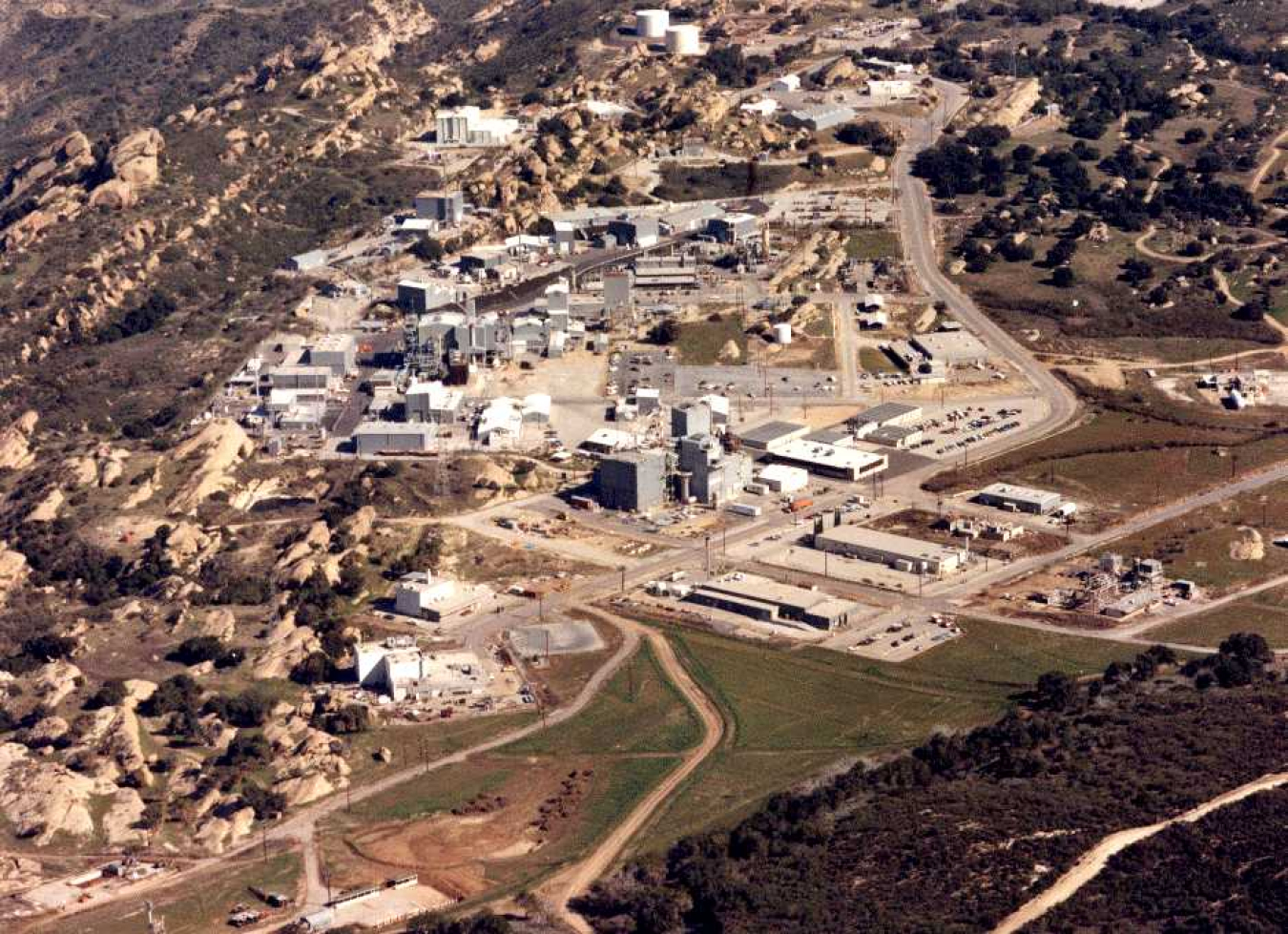
ETEC in 1985
Nuclear Energy Research
A broad range of energy-related research, testing and development projects have been conducted at Area IV (ETEC). From the 1950s until the late 1980s these activities conducted for the DOE by Atomics International (AI) included nuclear energy development. Phasing out nuclear operations began during the mid-1960s and by 1980, all nuclear reactor operations in Area IV had ceased.
Nuclear Support Operation
Starting in 1956, several operations were conducted in Area IV to support nuclear programs. These included the manufacture, disassembly and management of fuel for reactor operations, and the operation of nuclear waste management facilities for offsite disposal. All operations – with the exception of the Radioactive Materials Handling Facility (RMHF), Fuel Storage Facility, and the Radiation Instrument Calibration Laboratory – were terminated by 1988. View the Major Operations Timeline to learn more about nuclear reactor programs and support operations.
Liquid Metals Operations
Throughout its existence, Area IV supported non-nuclear research and development programs. Primarily, these programs focused on testing liquid metal processes and developing liquid metal components (e.g., pumps, sodium water heat exchangers) and weld testing. This research supported the design of the Hallam Nuclear Power Facility, the Piqua Nuclear Power Facility, the Fast Flux Test Facility (FFTF) and the Clinch River Breeder Reactor. Learn more about liquid metal operations and programs.

Solar dish for Solar One
Other Work
ETEC used its capabilities to support the DOE in a variety of energy-related projects. Read about some of the ETEC’s contributions below.
ETEC participated in studies and tests involving advanced solar collectors with potential for commercial electricity production. The group's experience in the design and analysis of heat transfer systems was applied to the development of the Solar One central power conversion unit located near Barstow, California. Separately, Area IV hosted a solar concentrator and receiver used to power a 25 kW Sterling engine generator module.
ETEC also supported the DOE in the development of a number of energy conversion processes designed to improve the utilization of coal. They performed design studies and operated a coal conversion test facility to develop an innovative method of converting coal into liquid and gas fuels.
Another project ETEC participated in was the recovery of heat energy from the ocean depths as part of the Ocean Thermal Energy Conversion (OTEC) project. OTEC looks at how the temperature differential between warm ocean water and the colder water found some distance beneath the surface can generate electricity. ETEC supplied the test director and technical management for the OTEC-1 tests.

Ocean Thermal Energy Conversion Concept
ETEC used their experience in energy auditing, technical evaluation design review and monitoring of institutional conservation programs to support the DOE. The efforts were designed to help federal energy managers identify and implement energy and conservation measures. Energy conservation and solar energy concepts were incorporated into government buildings.

Seismic Test facility
Additionally, ETEC conducted tests to determine vulnerabilities to the effects of earthquakes, such as the fragility of piping systems. It also tested devices used to isolate the movement of buildings, bridges and hardware during earthquakes.
Learn more about the Energy Technology Engineering Center's history.

